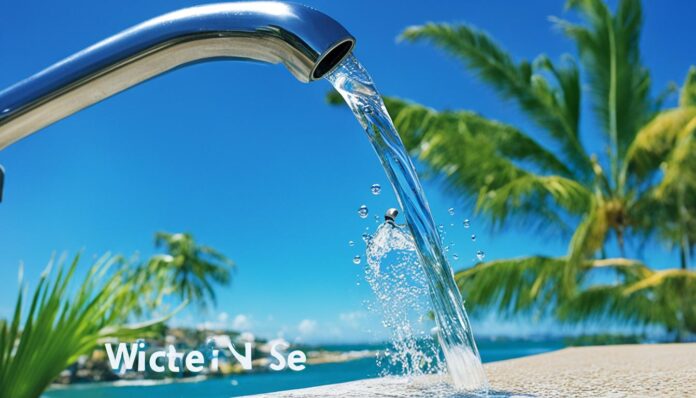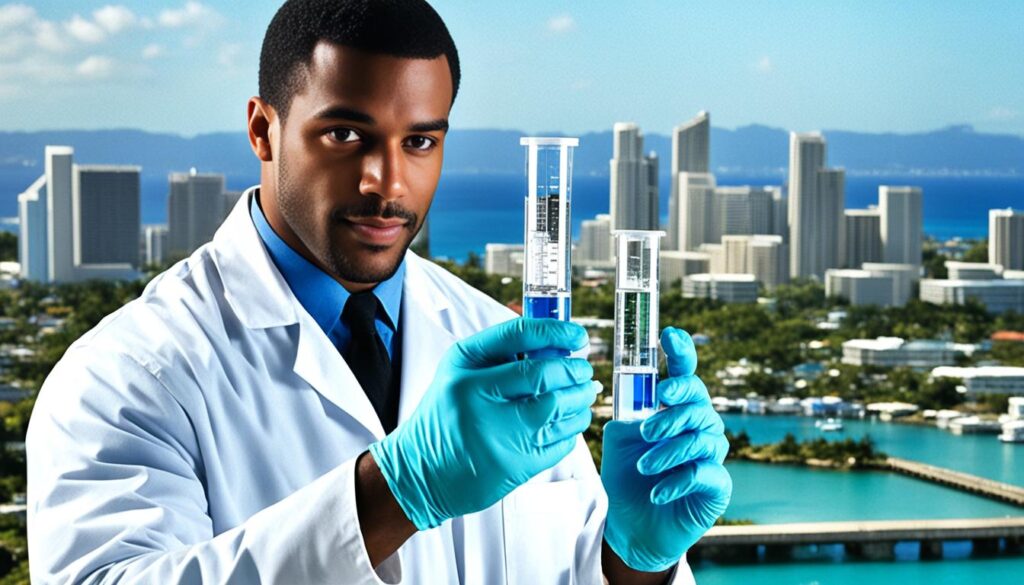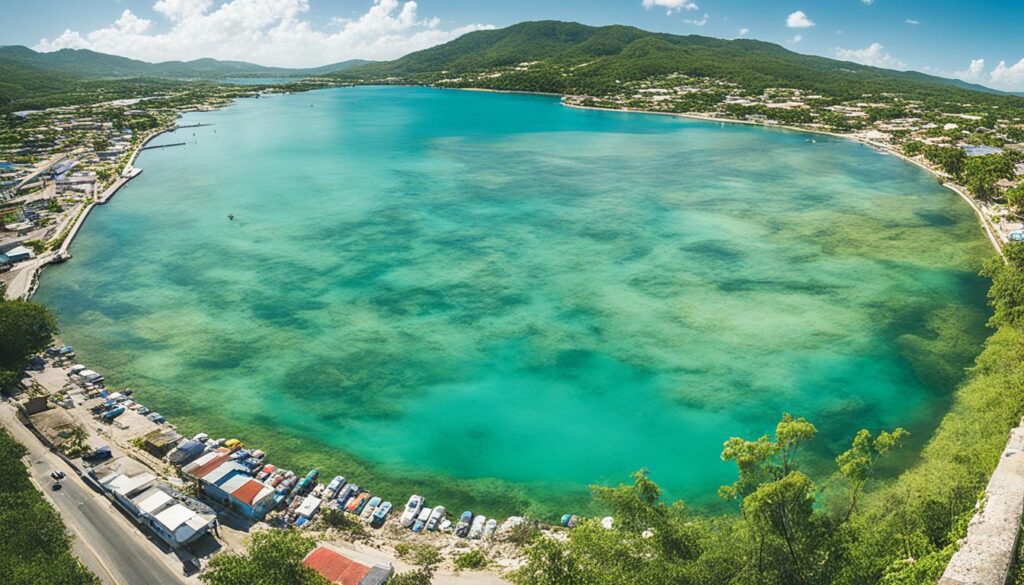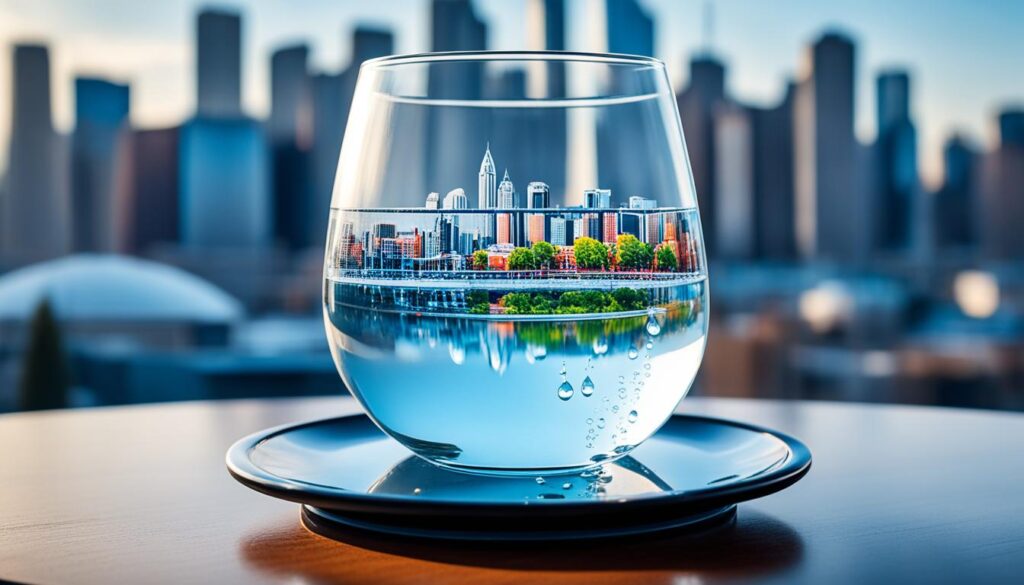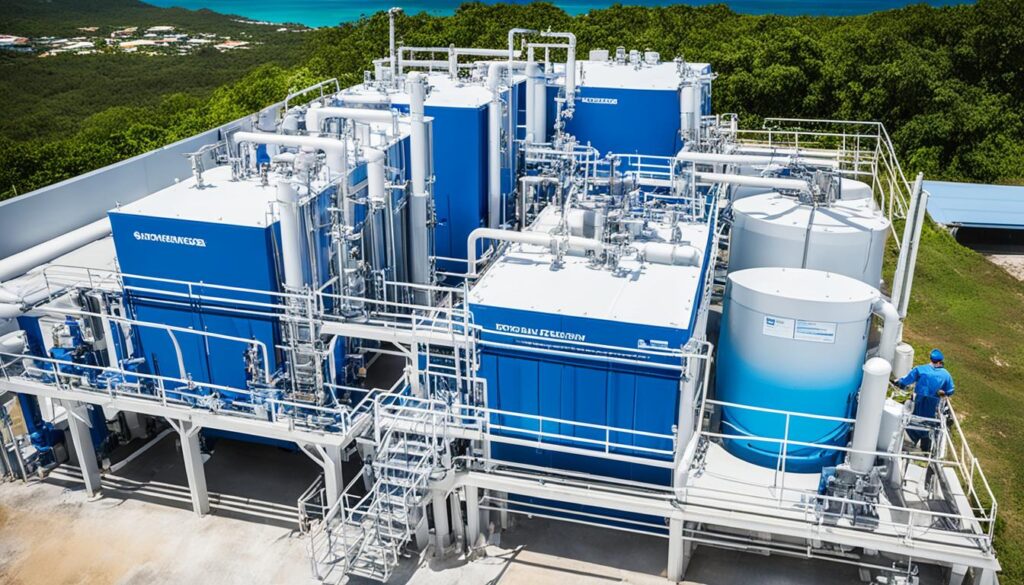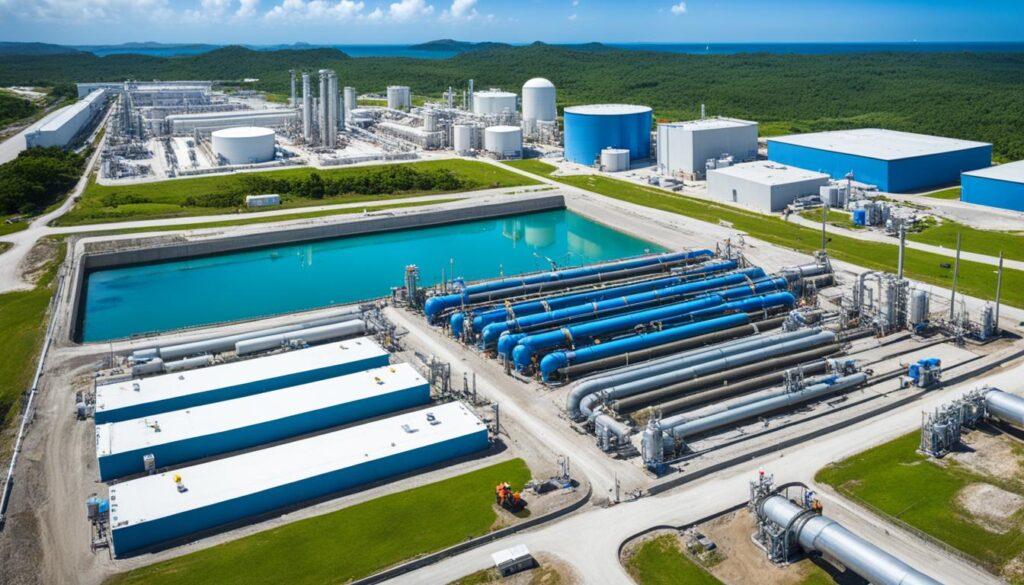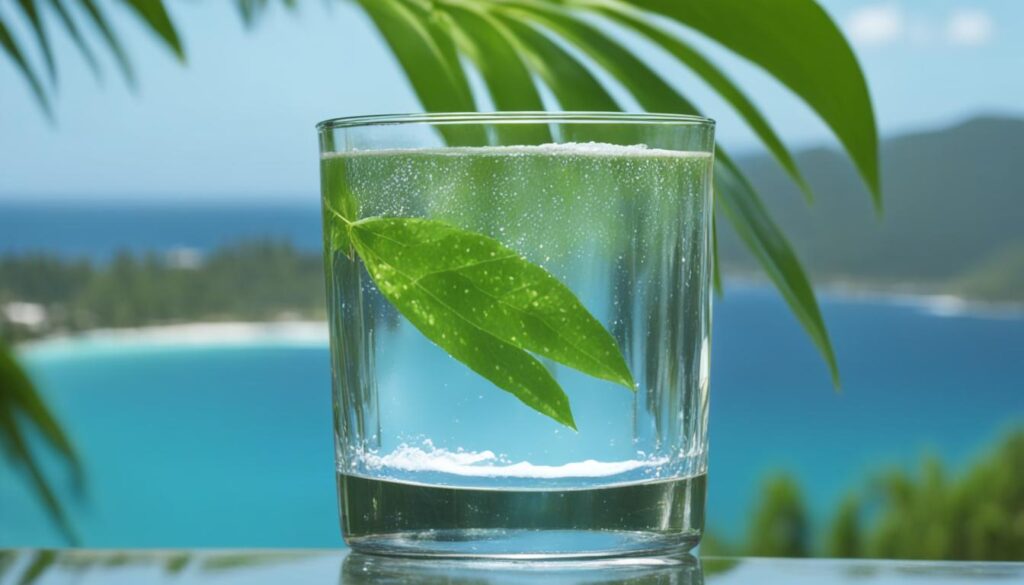Do you ever wonder how safe the drinking water is in Montego Bay? Are you confident that the water you consume every day is free from harmful contaminants? It’s a thought that may have crossed your mind, and rightfully so. Your health and well-being depend on having access to clean and safe drinking water.
There’s no denying the importance of drinking water safety in Montego Bay. The risks associated with consuming contaminated water can have serious consequences for your health. From industrial waste to agricultural runoff, various sources contribute to water contamination in the area. But how can you protect yourself and your loved ones?
In this article, we will explore the measures taken to ensure the quality of drinking water in Montego Bay. We will discuss water testing procedures, common sources of contamination, and the different safe drinking water sources available. By understanding the standards, purification methods, and infrastructure in place, you can make informed choices and take necessary precautions to safeguard your health.
Montego Bay Water Quality and Testing
Ensuring safe drinking water is crucial for the well-being of residents in Montego Bay. The water quality standards and testing procedures play a vital role in maintaining the highest level of safety. Regular testing is conducted to monitor and detect any contaminants that may compromise the quality of the water supply.
Montego Bay follows strict regulations set by local health agencies to ensure the water quality meets the established standards. These standards take into account various factors such as microbial and chemical contaminants, ensuring that the water is free from harmful substances.
Water testing in Montego Bay involves collecting samples from different sources, including drinking water treatment plants, distribution networks, and private wells. The samples are then analyzed in certified laboratories using state-of-the-art equipment and techniques.
The testing process involves assessing the levels of various parameters, including pH, turbidity, chlorine residual, and the presence of specific contaminants. By analyzing these factors, experts can determine if the water meets the required standards.
Regular testing is imperative to identify any deviations in water quality and take appropriate measures to rectify them. By conducting routine testing, Montego Bay ensures that any potential risks or issues are promptly addressed, guaranteeing the delivery of safe and clean drinking water to its residents.
Through consistent monitoring and rigorous testing procedures, Montego Bay is committed to safeguarding the health and well-being of its population by maintaining high water quality standards.
Highlights:
Montego Bay follows strict regulations to maintain the highest water quality standards.
Water testing involves sampling from various sources and analyzing key parameters.
Regular testing ensures prompt detection and resolution of any water quality issues.
Montego Bay prioritizes the delivery of safe and clean drinking water to its residents.
Understanding Water Contamination in Montego Bay
Water contamination poses a significant threat to public health. In Montego Bay, sources of water contamination include industrial waste and agricultural runoff. The pollutants from these sources can find their way into water bodies, contaminating the water supply. Consuming contaminated water can lead to various health risks, including gastrointestinal illnesses, skin infections, and even long-term health complications.
Detecting and addressing water contamination is crucial to safeguarding the community’s well-being. Proper monitoring, testing, and mitigation measures are essential to ensure the availability of clean and safe drinking water for all residents.
Common Sources of Water Contamination
Water contamination in Montego Bay can arise from several sources:
- Industrial waste: Improper disposal of industrial waste materials, such as chemicals and pollutants, can contaminate nearby water bodies. These pollutants can seep into the groundwater or get carried by rainwater runoff, reaching rivers, lakes, or other water sources.
- Agricultural runoff: Excessive use of pesticides, fertilizers, and other agricultural chemicals can lead to runoff that enters water sources. This runoff carries contaminants, including nitrates and pesticides, which can pose serious health risks when consumed.
- Domestic sewage: Improperly treated or untreated sewage can find its way into water bodies, introducing harmful bacteria, viruses, and parasites. This can happen due to issues with wastewater treatment facilities or inadequate sanitation practices.
- Landfills and waste disposal sites: Improper management of waste disposal sites can result in the leaching of hazardous materials into nearby water sources. This can contaminate the groundwater, affecting the quality of the water supply.
It is essential to understand these sources of water contamination in order to implement effective strategies for prevention and remediation.
The Health Risks of Consuming Contaminated Water
Consuming contaminated water can have severe consequences for public health. It can lead to various waterborne diseases and health conditions:
- Gastrointestinal illnesses: Water contaminated with bacteria, viruses, or parasites can cause diarrheal diseases like cholera, dysentery, and giardiasis. These illnesses can lead to dehydration and malnutrition, especially in vulnerable populations.
- Skin infections: Contaminated water can contain bacteria that cause skin infections, such as rashes, sores, or wounds. Prolonged exposure to contaminated water can worsen these infections and lead to other complications.
- Chemical exposure: Industrial pollutants and agricultural chemicals in contaminated water can result in long-term health effects, including organ damage, neurological disorders, and cancer.
- Heavy metal poisoning: Water contaminated with heavy metals like lead, mercury, or arsenic can have devastating effects on human health. Long-term exposure to these metals can cause irreversible damage to the nervous system, kidneys, and other vital organs.
Preventing water contamination and ensuring access to clean drinking water is crucial for the overall well-being and quality of life in Montego Bay.
Quote
“Water contamination is a grave concern that demands immediate attention. The health risks associated with consuming contaminated water are alarming. It is imperative that we take proactive measures to protect our water sources and provide safe drinking water to the community.”
| Contaminant | Potential Health Effects |
|---|---|
| Bacteria | Gastrointestinal illnesses, respiratory infections |
| Viruses | Gastroenteritis, hepatitis, respiratory illnesses |
| Parasites | Intestinal infections, abdominal pain, diarrhea |
| Chemicals | Organ damage, cancer, neurological disorders |
| Heavy metals | Lead poisoning, kidney damage, developmental issues |
Safe Drinking Water Sources in Montego Bay
Exploring Clean Water Options
When it comes to ensuring access to safe and clean drinking water in Montego Bay, you have several options to choose from. These include reliable public water supply systems, bottled water, and alternative solutions like water filtration systems.
Public Water Supply Systems
Montego Bay is equipped with well-maintained public water supply systems that provide clean drinking water to households and businesses. These systems undergo regular testing and treatment to ensure compliance with safety standards. The authorities responsible for water management prioritize the quality and availability of water for the community.
Bottled Water
If you prefer the convenience and reassurance of bottled water, there are numerous reputable brands available in Montego Bay. These brands follow strict quality control measures and source their water from clean and safe natural springs. Look for bottled water products that meet recognized quality standards and have a proven track record of reliability.
Alternative Solutions: Water Filtration Systems
Water filtration systems are gaining popularity among individuals who want an additional layer of purification for their drinking water. These systems use advanced filtration technologies to remove impurities, contaminants, and odors, providing you with clean and great-tasting water straight from your tap. Consider options like activated carbon filters, reverse osmosis systems, or ultraviolet (UV) disinfection devices to enhance the quality of your drinking water.
| Safe Drinking Water Sources in Montego Bay | Pros | Cons |
|---|---|---|
| Public Water Supply Systems |
|
|
| Bottled Water |
|
|
| Water Filtration Systems |
|
|
It is important to choose the drinking water source that aligns with your needs, preferences, and budget while ensuring the highest level of cleanliness and safety.
Drinking Water Standards in Montego Bay
When it comes to ensuring the safety and quality of drinking water in Montego Bay, local health agencies have established rigorous standards and regulations. These standards serve as guidelines to monitor and maintain water quality, protecting the health of residents and visitors alike.
Drinking water standards in Montego Bay cover various parameters and limits that must be met to consider water safe for consumption. These parameters include:
- Microbial contaminants: Montego Bay’s drinking water must be free from harmful bacteria, viruses, and other microorganisms that can cause diseases.
- Chemical contaminants: The levels of chemicals, such as disinfectants, disinfection byproducts, heavy metals, and pesticides, must be within the acceptable limits to prevent adverse health effects.
- Physical properties: The clarity, color, and odor of drinking water should be within defined ranges to ensure both aesthetic appeal and safety.
- Radioactive elements: Montego Bay’s drinking water must also be tested for radioactive substances to guarantee it is free from any potential radiation hazards.
Local health agencies regularly conduct extensive testing and monitoring to ensure compliance with these standards. Water samples from different sources, including public water supply systems and bottled water, are collected and analyzed for various contaminants. The results of these tests help identify any potential issues and guide corrective actions to maintain safe drinking water in Montego Bay.
To give you a better understanding, here’s an informative table summarizing some key aspects of Montego Bay’s drinking water standards:
| Parameter | Limit | Testing Frequency |
|---|---|---|
| Microbial contaminants | None detectable | Weekly |
| Chemical contaminants | Within defined limits | Monthly |
| Physical properties | Clarity: Color: Odor: None objectionable | Quarterly |
| Radioactive elements | Below regulatory limits | Annually |
By adhering to these drinking water standards, Montego Bay ensures the availability of safe and clean water for its residents and visitors. The continuous monitoring and testing efforts contribute to the overall well-being and health of the community.
Water Purification Methods in Montego Bay
Ensuring the safety of drinking water in Montego Bay requires effective water purification methods that can remove contaminants and provide clean, healthy water for consumption. This section will explore some of the commonly used techniques for water purification in Montego Bay, including chlorination, filtration, and UV disinfection.
Chlorination
Chlorination is a widely adopted method for water disinfection in Montego Bay. It involves adding chlorine or its derivatives, such as chloramines or chlorine dioxide, to the water to kill harmful bacteria, viruses, and parasites. Chlorine-based disinfectants effectively neutralize pathogens and prevent waterborne diseases, ensuring the safety of drinking water.
Filtration
Filtration is another crucial water purification method used in Montego Bay. It involves passing water through various types of filters to remove impurities and contaminants. Different filter mediums, such as activated carbon, sand, and ceramic, are used to trap sediments, chlorine, pesticides, heavy metals, and other harmful substances. Filtration ensures the removal of both visible and invisible impurities, providing clean and clear drinking water.
UV Disinfection
UV disinfection is a modern and efficient method employed in Montego Bay’s water purification processes. It utilizes ultraviolet light to destroy the DNA of microorganisms, rendering them unable to reproduce and cause harm. UV disinfection systems are highly effective at eliminating bacteria, viruses, and protozoa, making the water safe for consumption without the need for chemical additives.
“Water purification methods like chlorination, filtration, and UV disinfection play a crucial role in ensuring the safety and quality of drinking water in Montego Bay.”
These purification methods are often used in combination, forming multi-barrier systems that provide comprehensive protection against contaminants. The exact combination and sequence of purification steps may vary depending on the specific water source and quality requirements.
Now let’s take a closer look at the effectiveness of these purification methods for Montego Bay’s water supply:
| Water Purification Method | Contaminants Removed | Advantages |
|---|---|---|
| Chlorination | Bacteria, viruses, parasites | Cost-effective, widely used, kills a wide range of pathogens |
| Filtration | Sediments, chlorine, pesticides, heavy metals | Removes visible and invisible impurities, improves taste and clarity |
| UV Disinfection | Bacteria, viruses, protozoa | Chemical-free, environmentally friendly, does not impact taste or odor |
By employing these water purification methods, Montego Bay ensures that its residents and visitors have access to clean, safe drinking water. The combination of chlorination, filtration, and UV disinfection guarantees the removal of harmful contaminants, providing peace of mind when it comes to water quality.
Next, we will delve into the water supply infrastructure in Montego Bay, exploring how water is sourced, treated, and distributed to homes and businesses.
Montego Bay Water Supply Infrastructure
Ensuring clean and safe water is essential for the well-being of Montego Bay residents. The water supply infrastructure plays a vital role in sourcing, treating, and distributing water to homes and businesses. Let’s take a closer look at how Montego Bay’s water supply system operates and the measures in place to maintain water quality.
Sourcing Water
The primary source of water for Montego Bay is the Great River, which provides a significant portion of the city’s water supply. The river water is carefully collected and stored in reservoirs before undergoing treatment processes.
Treatment Processes
Once the water is sourced, it undergoes a comprehensive treatment process to eliminate contaminants and ensure its safety for consumption. The treatment process typically involves the following steps:
- Screening: Water is screened to remove large debris and sediment.
- Coagulation and Flocculation: Chemicals are added to the water to form flocs, which help in the removal of smaller particles.
- Sedimentation: The water is allowed to settle, and the sediment is removed.
- Filtration: The water passes through filters made of sand, gravel, and activated carbon to remove any remaining impurities.
- Disinfection: Chlorine or other disinfectants are added to kill bacteria, viruses, and other harmful microorganisms.
The rigorous treatment processes ensure that the water supplied to Montego Bay residents meets the highest quality standards.
Distribution Network
Montego Bay has an extensive network of pipelines that distribute treated water to homes, businesses, and public facilities. The distribution network is carefully designed to maintain water pressure and ensure a consistent supply throughout the city.
The water supply infrastructure is continuously monitored and maintained by local authorities to prevent leaks, bursts, and other issues that could compromise water quality.
A Visual Representation of Montego Bay’s Water Supply Infrastructure
As you can see from the image above, Montego Bay’s water supply infrastructure is a complex system of sourcing, treatment, and distribution that ensures clean and safe water reaches each household and business. The efforts to maintain water quality and address any potential challenges are crucial in safeguarding the health and well-being of the community.
Tips for Ensuring Drinking Water Safety in Montego Bay
When it comes to your health, ensuring the safety of your drinking water is of utmost importance. In Montego Bay, Jamaica, taking necessary precautions to maintain safe drinking water is crucial. Here are some practical tips to help you safeguard your health:
- Boil your water: Boiling water is a simple yet effective way to kill any harmful bacteria or viruses that may be present. Bring the water to a rolling boil for at least one minute to ensure its safety.
- Use water filters: Investing in a reliable water filter can significantly enhance the quality of your drinking water. Look for filters that are certified to remove common contaminants like sediment, chlorine, and heavy metals.
- Stay informed: Stay updated on the water quality reports and advisories issued by local health authorities in Montego Bay. These reports provide valuable insights into any potential risks or concerns regarding the drinking water supply in your area.
- Avoid risky water sources: Be cautious when accessing water from sources that are not known to be safe. This includes streams, rivers, and untreated or untested wells. Stick to reliable and regulated sources of water to minimize the risk of contamination.
- Maintain hygiene: Practicing good hygiene habits can also contribute to drinking water safety. Wash your hands thoroughly before handling and consuming water. Additionally, ensure that any containers used to store water are clean and free from contaminants.
- Regularly clean water storage containers: If you store water for future use, make sure to regularly clean and sanitize the containers to prevent the growth of bacteria or other harmful microorganisms.
Remember, your health is in your hands. By following these tips and adopting a proactive approach, you can ensure the safety of your drinking water in Montego Bay.
By prioritizing drinking water safety, you are taking a significant step towards maintaining your overall well-being. Stay informed, implement these precautions, and enjoy the peace of mind that comes with access to safe drinking water.
| Benefits of Ensuring Drinking Water Safety in Montego Bay |
|---|
| 1. Preserves your health and well-being |
| 2. Reduces the risk of waterborne diseases |
| 3. Provides peace of mind for you and your family |
| 4. Promotes a healthier lifestyle |
| 5. Helps avoid potential medical expenses |
Promoting Awareness and Education about Drinking Water Safety
When it comes to drinking water safety in Montego Bay, promoting awareness and education plays a crucial role in ensuring the well-being of individuals and the community as a whole. It is essential for local authorities, community organizations, and individuals to come together and take proactive measures to spread information and educate others about the importance of safe drinking water.
By promoting awareness, we can empower individuals to make informed decisions and take the necessary steps to protect themselves from potential health hazards. It is essential to educate the public about the potential risks associated with consuming contaminated water and the importance of accessing clean and safe drinking water sources.
Local authorities can play a significant role in promoting drinking water safety by implementing public education campaigns and providing accurate and up-to-date information on water quality and testing. These initiatives can help individuals understand the potential sources of water contamination in Montego Bay and the steps they can take to mitigate these risks.
Community organizations also hold a unique position in advocating for drinking water safety. They can organize events, workshops, and seminars to educate community members about the importance of safe drinking water and provide practical tips on how to ensure the safety of their water sources. By fostering a sense of community and shared responsibility, these organizations can create a stronger and safer environment for everyone.
“Safe drinking water is a fundamental right, and it is up to all of us to protect and preserve it. By working together, we can promote awareness, educate others, and ensure that the people of Montego Bay have access to clean and safe drinking water.”
Individuals also have a crucial role to play in promoting drinking water safety. By prioritizing their health and the health of their families, individuals can make a significant impact. Simple steps like boiling water before consumption, using water filters, and avoiding risky water sources can significantly reduce the risk of consuming contaminated water.
It is essential to remember that access to safe drinking water should not be taken for granted. By promoting awareness and education, we can strengthen our community’s resilience to potential water crises and ensure the well-being of future generations.
Conclusion
In conclusion, ensuring drinking water safety in Montego Bay is of utmost importance. The quality of Montego Bay’s water supply and the potential risks of contamination emphasize the need for proactive measures. By understanding the water testing procedures and sources of contamination, individuals can make informed choices to protect their health.
Access to clean water sources is essential in maintaining safe drinking water. Whether through public water supply systems, bottled water, or home water filtration systems, it is crucial to prioritize clean water sources and avoid risky alternatives.
Adhering to the drinking water standards set by local health agencies is another crucial aspect of ensuring water safety. Monitoring and purifying water using suitable methods like chlorination, filtration, and UV disinfection help remove contaminants and maintain high-quality drinking water.
By raising awareness and education about drinking water safety, communities can collectively work toward maintaining a safe water supply. It is vital for both local authorities and individuals to take responsibility for promoting and implementing measures that safeguard the well-being of Montego Bay residents.




























